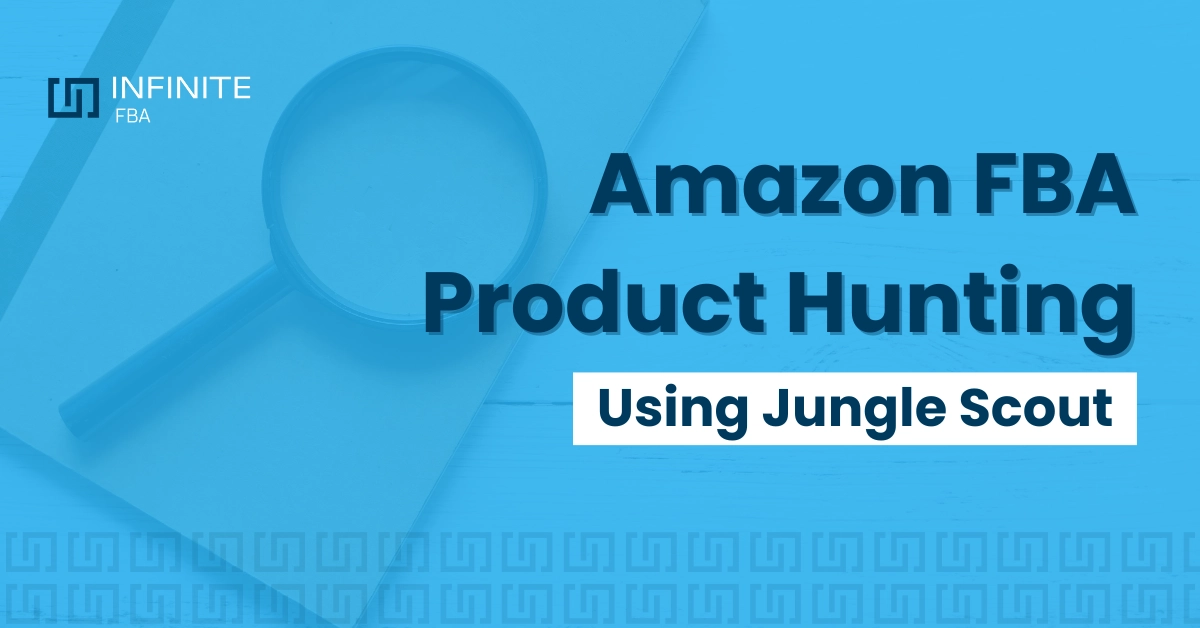Whether you’re developing the next tech invention, creating a gourmet recipe, or simply trying to find the best Mexican restaurant in a new city, all of life’s great ventures typically start with research. Becoming an Amazon Seller is no different.
Meticulous Amazon product research is the first step to becoming a profitable FBA Seller. After all, the products you choose to sell will dictate your market presence, customer appeal, and profitability. Using the right Amazon Seller tools can help you conduct top-notch research to find the best product to sell on Amazon—and sell them better than your competitors.
Enter Jungle Scout.
Jungle Scout is designed to empower Amazon FBA sellers with actionable insights and data-driven strategies. Whether you’re a seasoned seller or a newcomer to the world of e-commerce, Jungle Scout offers a suite of features that streamline the product research process. This guide will explain how to conduct Amazon FBA product research using Jungle Scout.
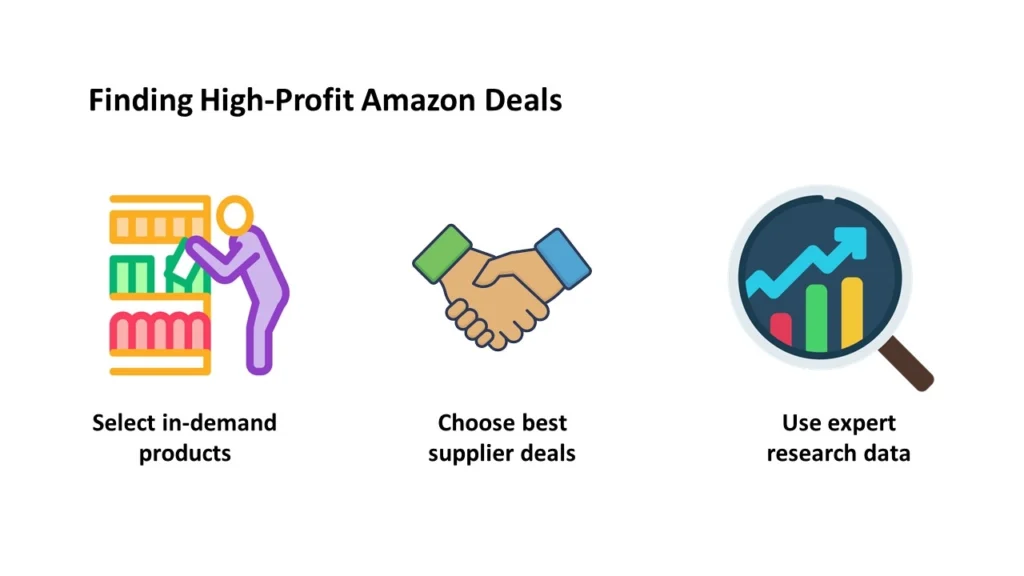
Understanding High-Profit Amazon Product Criteria
If you’ve ever watched Shark Tank, you know that the sharks ask the entrepreneurs the same types of questions, along the lines of:
How much does it cost you to make the product?
How much money have you made in sales?
Is this product unique, or do competitors exist in the marketplace?
Is this product in demand?
Ultimately, the answers to these questions tell the sharks everything they need to know about whether the product is worth investing in. You should be asking yourself the same questions when conducting your Amazon product research The answers to these questions fall under research in the following three categories:
- Profitability: You can learn more about how profitable a product is by understanding its sales rank, price point, and profit margins.
- Competitor analysis: You’ll need to identify competitors and analyze their strengths and weaknesses. Analyzing the number of sellers, their reviews, and brand dominance can play a pivotal role in deciding whether or not to sell a particular product.
Niche selection: Choosing the right product niche is pivotal for success in Amazon FBA. You’ll need to identify profitable niches, access market trends, and consider how seasonality will affect your product choice.
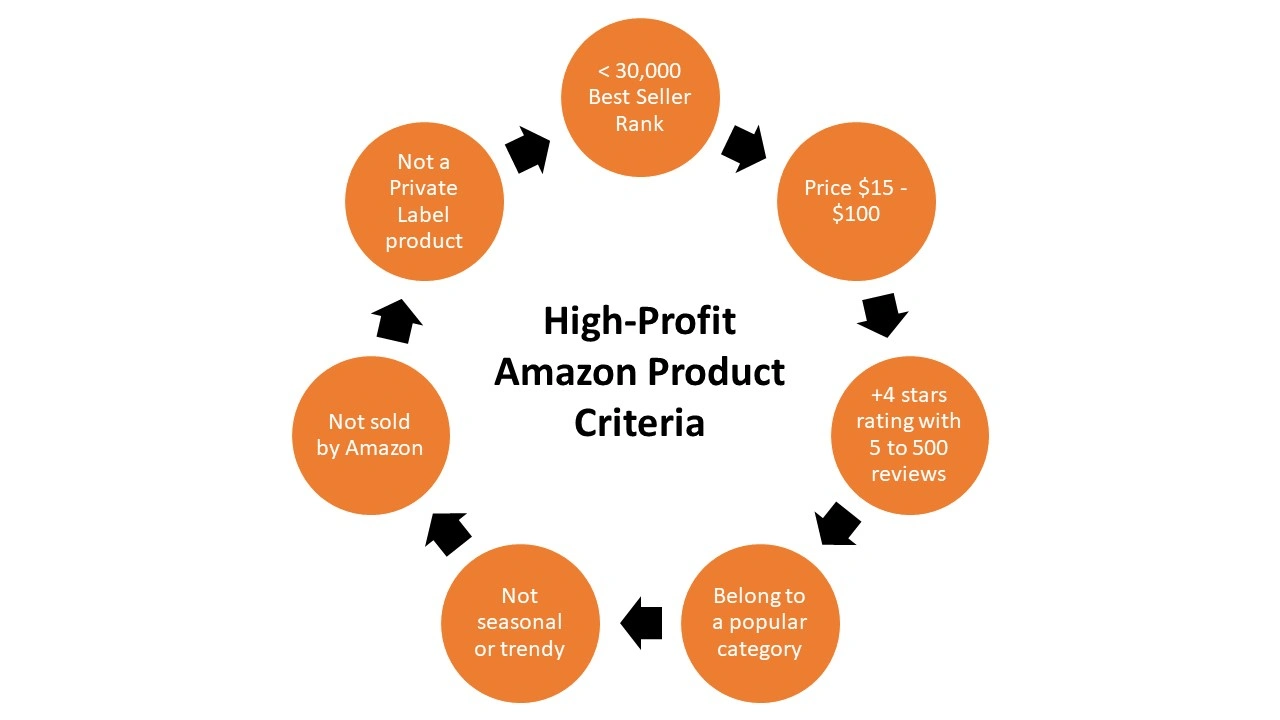
Now that we’ve covered the basics, let’s learn how to use Jungle Scout for Amazon FBA product research to help you answer the above questions and find your gold mine product.
Using Jungle Scout Tools For Amazon FBA Product Research
Jungle Scout has several tools that can help you with your product hunting. The four main features we will focus on are the Product Database, the Product Tracker, the Niche Hunter and the Amazon Sales Estimator.
Navigating Jungle Scout’s Product Database

Jungle Scout’s Product Database is a powerful tool that allows you to search through Amazon’s entire catalog of products. You can filter results by different criteria such as price, demand, competition, and more. This makes it easier for you to narrow down your search and find potential products to sell by giving you insights into key product metrics, sales performance, and potential profitability. Utilize this feature to identify products that align with your business goals and market trends. Here are some expert tricks to keep in mind:
Filtering Options
Amazon is a huge marketplace, but you can dive into it more easily using Jungle Scout’s advanced filtering options. Tailor your searches based on criteria such as price, sales rank, and review count. These filters enable you to pinpoint products that meet your requirements, streamlining the product research process.
Once you have selected your filters, the database will display a list of products that match your criteria. From here, you can click on each product to view more data. But what do you do with that data?
Analyze Product Metrics
Understanding the metrics associated with a product is fundamental to making informed decisions. Jungle Scout provides a comprehensive overview of crucial metrics, including:
- Sales rank: Indicator of how well a product is selling on Amazon. The lower the sales rank, the more popular and in-demand the product is. This means that products with low sales rank have high monthly sales and are likely to be profitable.
- Monthly sales: Pretty self-explanatory—this key metric shows the number of units sold per month. This gives insight into the product’s popularity and potential profitability.
- Average price: This indicates how much customers are willing to pay for a particular product, which can help determine its market demand and help you further determine profitability.
- Profit margins: A direct reflection of your business’s sustainability. Calculate potential profit margins by subtracting all costs associated with the product (including Amazon fees and shipping) from the desired selling price. Aim for healthy margins to ensure a viable and thriving business.
How to Use Jungle Scout’s Product Database
- Access the Product Database: First, log in to your Jungle Scout account and click on the Product Database tab at the top of the page.
- Set your search criteria: The product database has various filters that allow you to search for specific products. Use these filters to narrow your search based on category, price range, sales, reviews, and more.
- Analyze product results: Once you have set your search criteria, the product database will display a list of products that match your specifications. Take some time to analyze each product’s data, including its estimated monthly sales, revenue, and number of reviews.
- Use the Opportunity Score: Jungle Scout’s Product Database also provides an Opportunity Score for each product. This score rates a product’s potential based on demand, competition, listing quality, and other factors. Keep an eye out for products with high opportunity scores, as they may be worth further investigation.
- Research competitors: When looking at a particular product in the database, click the Competitors tab to see a list of other sellers offering similar products. This can give you insights into their pricing strategy, images used, and other important details.
- Save products for later: If you come across a potential product but are not ready to take action, you can save it by clicking on the “Save” button. You can access saved products from your account dashboard later on.
Export data: If you want to analyze the data further or keep a record of it outside of Jungle Scout’s platform, you can export it as a CSV file by clicking on the “Export” button at the bottom right corner of the product results page.
Utilizing Jungle Scout’s Product Tracker
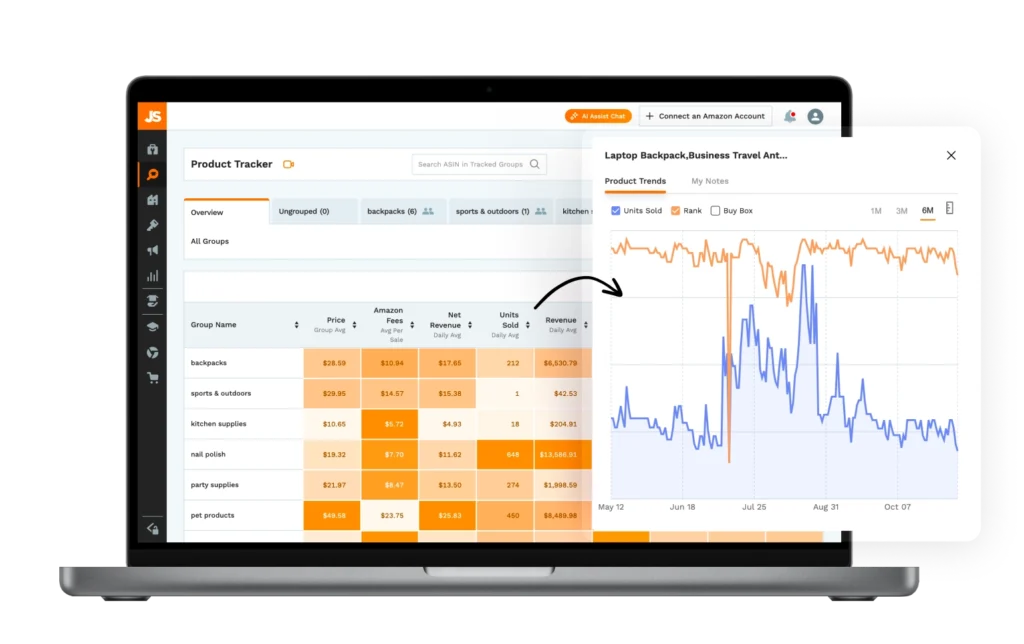
Jungle Scout’s Product Tracker empowers you to monitor and analyze historical data for specific products. Track changes in sales rank, pricing, and other critical metrics over time. This feature not only aids in predicting trends but also allows you to make data-driven decisions regarding inventory and pricing strategies.
Monitor Historical Data
Look at how a product has performed over time. By understanding past trends, you can make more accurate predictions about future market behavior. Jungle Scout’s historical data feature provides a valuable tool for crafting a forward-thinking product research strategy.
Pro tip: Consider seasonality. Certain products experience fluctuations in demand based on seasons or events. Factor in seasonal considerations when selecting products to ensure a steady sales flow throughout the year. Being attuned to seasonal trends prevents inventory stagnation during off-peak periods.
Determine Your Price Point
Look at similar items in your niche to determine the optimal price point for your product. Pricing too high may deter potential customers, while pricing too low could compromise your profit margins. Find the sweet spot that aligns with customer expectations and financial goals.
How to use Jungle Scout’s Product Tracker:
- Log in to your Jungle Scout account: The first step to using Jungle Scout’s Product Tracker is to log in to your Jungle Scout account. If you don’t have an account yet, you can sign up for one on their website.
- Access the Product Tracker feature: Once you are logged in, click on the “Product Tracker” tab on the top navigation menu. This will take you to the product tracker dashboard.
- Set up a new product tracking campaign: To start tracking a new product, click the New Campaign button on the top right corner of the dashboard. This will open up a popup window where you can enter the product details you want to track.
- Enter product details: In the popup window, enter the ASIN (Amazon Standard Identification Number) or the product URL you want to track. You can also choose which marketplace and category you want to track.
- Select tracking settings: Next, select how often you want Jungle Scout to update the data for this product – daily or weekly. You can also choose whether you want to track sales rank, price, and inventory levels.
- Save and start tracking: Once you have entered all the necessary details and selected your tracking settings, click on Save Campaign. This will add your chosen product to the Product Tracker dashboard and start collecting data.
- Monitor your tracked products: You can now view all your tracked products and their corresponding data in the Product Tracker dashboard. You can use this information to analyze trends and make informed decisions about your Amazon business.
Add more products or edit existing campaigns: To add more products for tracking, simply repeat steps 3-6 for each new product. You can also edit or delete existing campaigns by clicking on them in the dashboard and selecting “Edit Campaign” or “Delete Campaign.”
Find Your Product Niche with Jungle Scout’s Niche Hunter Tool
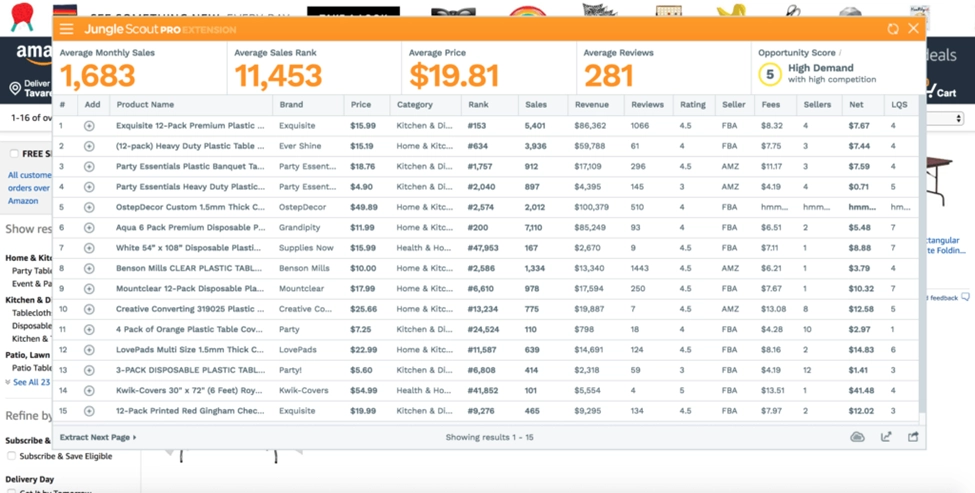
With the rise of e-commerce, finding a profitable niche has become more crucial than ever for online sellers. A niche is a specialized market segment that caters to a specific audience or consumer need. By targeting a niche, you can stand out from competitors and establish yourself as an expert in that particular area.
The key adjective here is a profitable niche. For example, you may be really interested in underwater basket weaving (did you know that’s a real thing now?), but if there’s not a huge demand for underwater basket weaving products, it’s probably not the best product niche to invest in.
Jungle Scout’s Niche Hunter is a powerful, easy-to-use tool designed to help you identify profitable niches with high demand and low competition, giving you a competitive edge in the crowded Amazon marketplace.
How to Use Jungle Scout’s Niche Hunter:
- Log in to your Jungle Scout account: If you don’t have an account yet, sign up for one on the Jungle Scout website.
- Click on Niche Hunter in the top menu bar: This will take you to the Niche Hunter dashboard, where you can start searching for potential niches.
- Enter your search criteria: Use keywords or specific categories to narrow down your search. You can also filter by parameters such as average monthly sales, competition level, and more.
- Review the results: The Niche Hunter tool will generate a list of potential niches based on your search criteria. Each niche will have a score from 1-10, indicating its overall profitability and potential for success.
- Analyze the data: Click on any niche to see more detailed information, including estimated monthly revenue, number of reviews, and more. This data will help you make informed decisions about which niches to pursue.
- Save your favorite niches: If you find a niche that looks promising, save it to your favorites for easy access later on.
- Start selling: Once you’ve identified a profitable niche with low competition, it’s time to start selling! Use the insights and data from the Niche Hunter tool to guide your product selection and marketing strategies.
Estimate Profit with Jungle Scout’s Amazon Sales Estimator
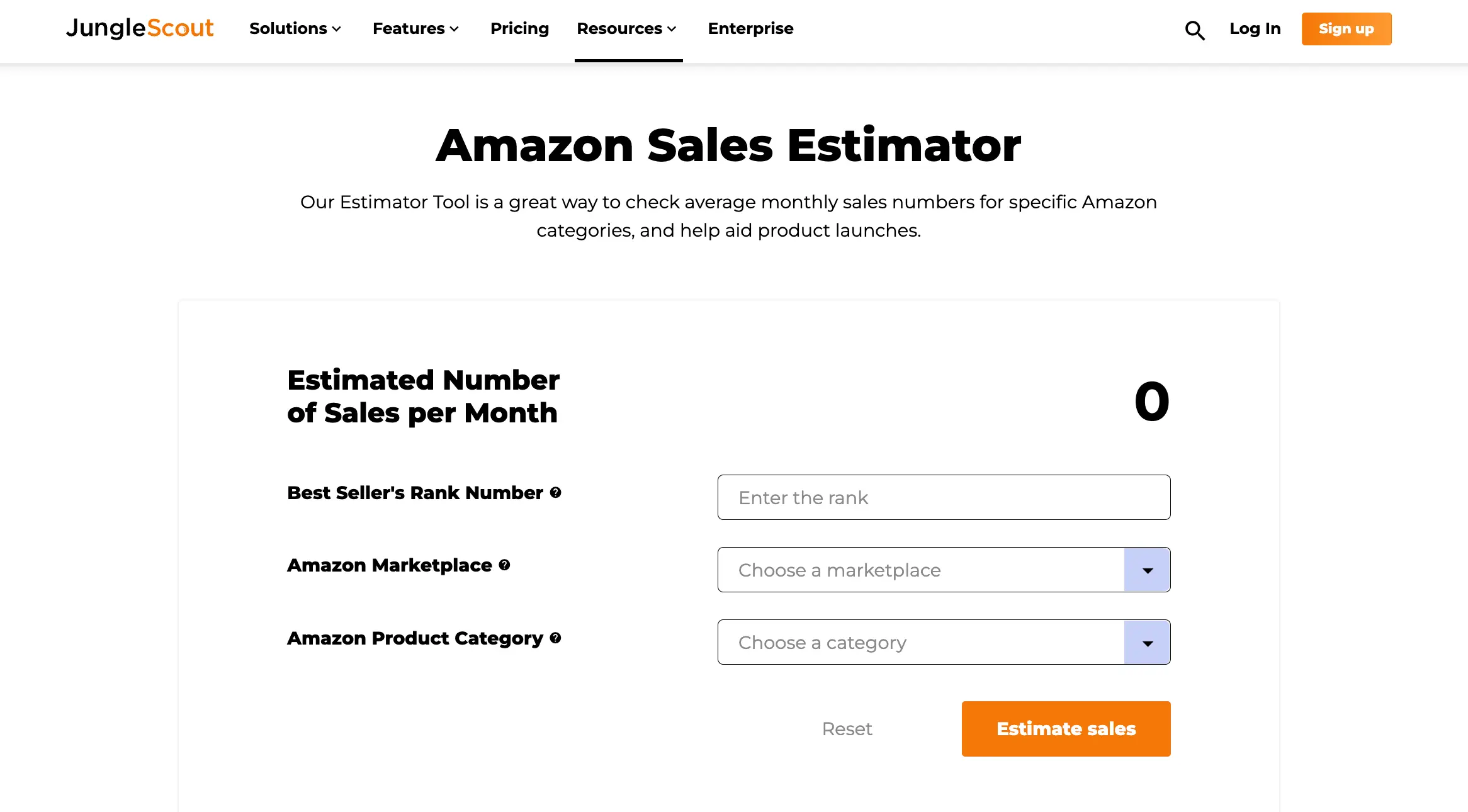
Last (but certainly not least) in your Amazon FBA product research journey is Jungle Scout’s Amazon Sales Estimator. One of the best parts about this tool is that it is completely free to use—no Jungle Scout subscription is required. (although, it’s strongly advised to have one because you can do much more with it).
The Amazon Sales Estimator tool allows you to estimate the monthly sales volume of any Amazon product. This will be a more helpful tool once you already have a product live on Amazon, but it can still offer important information when deciding whether or not to invest in a particular product. You can input the estimated price of your product, and the tool will generate an estimated sales figure based on historical data and current market trends. Or, you can input information for a competitor’s product.
Using this tool in conjunction with the Niche Hunter and Product Database tools can help you make informed decisions about which products have the potential for high profits and low competition. It also allows you to compare different products and niches before making a final decision.
How to Use Jungle Scout’s Sales Estimator
- Go to the Jungle Scout website: Click on Resources on the top bar to get a drop-down menu. Then, select Sales Estimator under Free Tools.
- Enter a Best Seller’s Rank Number: You can find this number on a competitor product’s listing page. In the Product information chart, you’ll see Best Sellers. After you enter the number, select the national market you’re selling in, and select your product category.
- Click the Estimate Sales button: The tool will analyze data in seconds and give you a total of monthly sales based on your search parameters.
- Analyze the data: This can help you determine the scale of your competition, identify niche markets, and set your future sales goal. It can also guide you in selecting profitable and in-demand product types.
Find Amazon FBA Success with Jungle Scout

Jungle Scout is more than a tool; it’s a powerful ally in your Amazon FBA journey, starting with finding the right product. And it has many other helpful features from the ones we’ve outlined. For example, we really like using Jungle Scout’s Chrome Extension for keyword research — understanding your target audience’s language is vital for optimizing product listings, enhancing visibility, and attracting potential customers.
The e-commerce landscape is ever-evolving, and staying informed is non-negotiable. Regularly monitoring Amazon trends with tools like Jungle Scout allows you to keep a vigilant eye on policy changes that may impact your business. Then you can swiftly adapt to shifts in customer behavior, marketplace dynamics, and regulatory updates.
To further enhance your Amazon FBA journey, leverage Jungle Scout with an exclusive Jungle Scout coupon code. This code gives you access to valuable insights, enhanced features, and a competitive edge in the ever-evolving e-commerce landscape.

